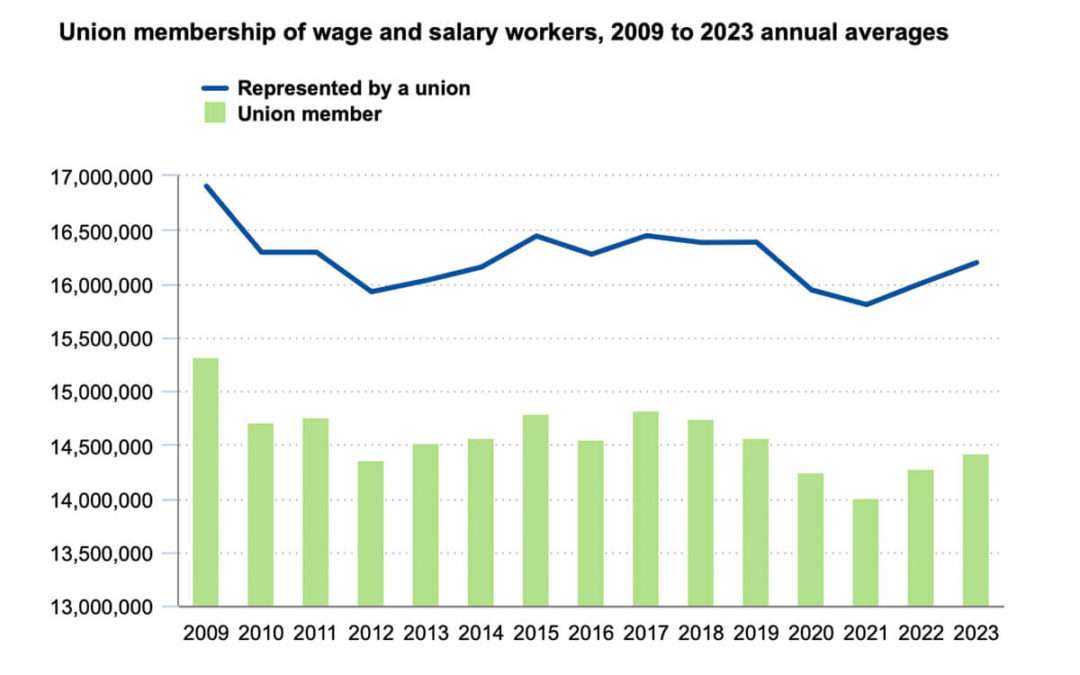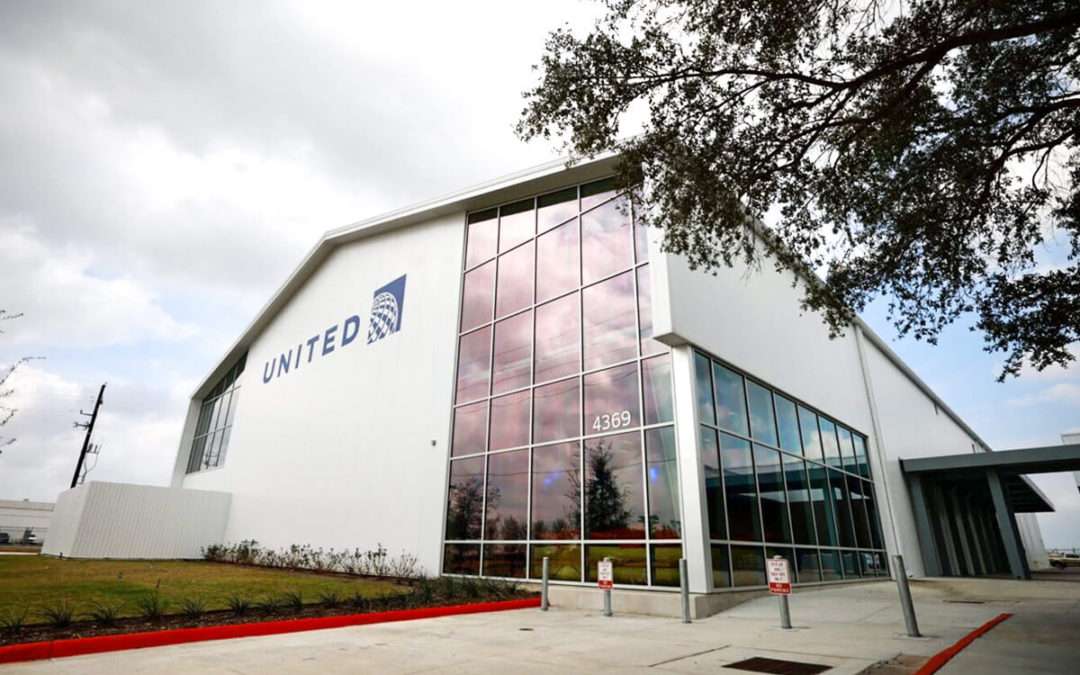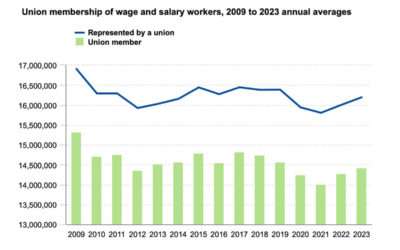
Michigan Senate Passes Right to Work Repeal
On Tuesday, the Michigan Senate passed a bill to revoke the state’s right-to-work legislation, which permits employees in unionized positions to collect union-negotiated wages, pensions, and work rules without contributing dues to help pay for the costs of negotiating and enforcing union contracts.
Big corporate lobbyists and political donors now face the prospect of watching a fortune spent lobbying for Right to Work in Michigan go to waste. Efforts to implement Right to Work in Michigan have cost at least $30 million since 2007.
In a tight 20-17 vote along party lines, the bill aims to eliminate provisions in the state’s Employment Relations Commission Act allowing individuals in unionized workplaces to ignore union membership and fees but collect union benefits.
The bill will now proceed to the state House for consideration.
While the state House has already approved its version of the bill, both chambers must agree on the final language. Michigan Governor Gretchen Whitmer, has pledged to sign the bill into law if it reaches her desk.
This legislation could be the next significant achievement for union-friendly Michigan lawmakers, who secured control of the state Senate, House, and governorship in November for the first time in four decades. “It is a new day here in Lansing,” declared Senate Majority Leader Winnie Brinks.
Proponents of the bill point out that the right-to-work legislation has negatively impacted workers’ wages and rights since its introduction in 2012.
Right-to-work legislation reduces wages for union and non-union employees, averaging a $1,500 annual decrease, and diminishes the chances of workers receiving health insurance or pension benefits through their employment. These laws indirectly impact consumer spending by decreasing compensation, posing a risk to economic expansion. With every reduction of $1 million in workers’ wages, there is an estimated $850,000 decline in economic spending. This means six jobs are lost for every $1 million reduction in statewide wages.
Critics claim that the law has increased the competitiveness of the state’s businesses. However, Right to Work supporters often have difficulty pointing out any business or company that has moved to the state citing Right to Work. They also cannot name companies that have increased hiring or created new jobs thanks to Right to Work legislation.
In a 2012 effort to counteract right-to-work legislation and invalidate laws preventing collective bargaining, United Auto Workers and other unions devised a proactive strategy: passing a state constitutional amendment. The ballot initiative, Proposal 2, aimed to enshrine collective bargaining as a constitutional right within the state.
However, Proposal 2 was resoundingly defeated, with 57% voting against it and 42% in favor. The proposal succumbed to a well-funded misinformation campaign featuring ads claiming that, without Right to Work, school districts would be barred from firing child molesters.
According to The Detroit News, Senate Republicans opposed the bill, contending that it would remove workers’ freedom to choose whether to join a union and financially back labor groups that support Democratic campaigns. It’s already a violation of federal laws to use dues money from union members to fund political campaigns.
In 2022, there were 589,000 individuals affiliated with unions in Michigan. Furthermore, 55,000 other salaried workers in the state were either represented by a union in their primary occupation or protected under an employee association or agreement without being actual union members.
According to data from the U.S. Bureau of Labor Statistics, the percentage of salaried workers in Michigan who were union members in 2022 was 14.0 percent, an increase from 13.3 percent in 2021. Jason Palmer, the Regional BLM Commissioner, highlighted that Michigan’s highest union membership rate was 26.0 percent in 1989, the first year data was accessible. The lowest rate occurred in 2021, after the enactment of multiple laws that negatively impacted workers in the state.
Across the nation, 10.1 percent of employed wage and salary workers were union members in 2022, a decrease from 10.3 percent in 2021. This drop was mainly due to a significant surge in the total number of salaried employees compared to the growth in union membership. The 2022 unionization rate of 10.1 percent marks the lowest in recorded history. Since 1989, Michigan’s union membership rates have consistently exceeded the national average.
Right-to-work laws are currently in place in 27 states and Guam.
Related News
Bureau of Labor Statistics: Union Pay Gap Expands in 2023
Bureau of Labor Statistics: Union Pay Gap Expands in 2023WASHINGTON DC - According to the February report from the Bureau of Labor Statistics, union membership in 2023 held steady and did not decline despite employers spending over $400 million to oppose unification...
United Invests $32 Million into IAH Stores Expansion
$32 Million into IAH Stores ExpansionUnited Airlines is planning to expand its Stores operation in Houston, which, when completed, will be the largest Stores facility at the airline. United Invests $32 Million into IAH Stores ExpansionIAM141.org 30 January 2024HOUSTON...
Air Rage: Congressman Crenshaw Loses it Over Pet Carrier
Air Rage: Congressman Crenshaw Loses it Over Pet CarrierTara Blake, the wife of Texas Congressman Dan Crenshaw (R-Houston), has gone viral for a video in which she appears to physically assault a ticket Counter Agent working at Houston's Bush Intercontinental Airport...
Stay up to date with all the latest news and information from the Machinists Union

Michigan Senate Passes Right to Work Repeal
March 15, 2023
On Tuesday, the Michigan Senate passed a bill to revoke the state’s right-to-work legislation, which permits employees in unionized positions to collect union-negotiated wages, pensions, and work rules without contributing dues to help pay for the costs of negotiating and enforcing union contracts.
Big corporate lobbyists and political donors now face the prospect of watching a fortune spent lobbying for Right to Work in Michigan go to waste. Efforts to implement Right to Work in Michigan have cost at least $30 million since 2007.
In a tight 20-17 vote along party lines, the bill aims to eliminate provisions in the state’s Employment Relations Commission Act allowing individuals in unionized workplaces to ignore union membership and fees but collect union benefits.
The bill will now proceed to the state House for consideration.
While the state House has already approved its version of the bill, both chambers must agree on the final language. Michigan Governor Gretchen Whitmer, has pledged to sign the bill into law if it reaches her desk.
This legislation could be the next significant achievement for union-friendly Michigan lawmakers, who secured control of the state Senate, House, and governorship in November for the first time in four decades. “It is a new day here in Lansing,” declared Senate Majority Leader Winnie Brinks.
Proponents of the bill point out that the right-to-work legislation has negatively impacted workers’ wages and rights since its introduction in 2012.
Right-to-work legislation reduces wages for union and non-union employees, averaging a $1,500 annual decrease, and diminishes the chances of workers receiving health insurance or pension benefits through their employment. These laws indirectly impact consumer spending by decreasing compensation, posing a risk to economic expansion. With every reduction of $1 million in workers’ wages, there is an estimated $850,000 decline in economic spending. This means six jobs are lost for every $1 million reduction in statewide wages.
Critics claim that the law has increased the competitiveness of the state’s businesses. However, Right to Work supporters often have difficulty pointing out any business or company that has moved to the state citing Right to Work. They also cannot name companies that have increased hiring or created new jobs thanks to Right to Work legislation.
In a 2012 effort to counteract right-to-work legislation and invalidate laws preventing collective bargaining, United Auto Workers and other unions devised a proactive strategy: passing a state constitutional amendment. The ballot initiative, Proposal 2, aimed to enshrine collective bargaining as a constitutional right within the state.
However, Proposal 2 was resoundingly defeated, with 57% voting against it and 42% in favor. The proposal succumbed to a well-funded misinformation campaign featuring ads claiming that, without Right to Work, school districts would be barred from firing child molesters.
According to The Detroit News, Senate Republicans opposed the bill, contending that it would remove workers’ freedom to choose whether to join a union and financially back labor groups that support Democratic campaigns. It’s already a violation of federal laws to use dues money from union members to fund political campaigns.
In 2022, there were 589,000 individuals affiliated with unions in Michigan. Furthermore, 55,000 other salaried workers in the state were either represented by a union in their primary occupation or protected under an employee association or agreement without being actual union members.
According to data from the U.S. Bureau of Labor Statistics, the percentage of salaried workers in Michigan who were union members in 2022 was 14.0 percent, an increase from 13.3 percent in 2021. Jason Palmer, the Regional BLM Commissioner, highlighted that Michigan’s highest union membership rate was 26.0 percent in 1989, the first year data was accessible. The lowest rate occurred in 2021, after the enactment of multiple laws that negatively impacted workers in the state.
Across the nation, 10.1 percent of employed wage and salary workers were union members in 2022, a decrease from 10.3 percent in 2021. This drop was mainly due to a significant surge in the total number of salaried employees compared to the growth in union membership. The 2022 unionization rate of 10.1 percent marks the lowest in recorded history. Since 1989, Michigan’s union membership rates have consistently exceeded the national average.
Right-to-work laws are currently in place in 27 states and Guam.
Related

Bureau of Labor Statistics: Union Pay Gap Expands in 2023
Bureau of Labor Statistics: Union Pay Gap Expands in 2023WASHINGTON DC - According to the February report from the Bureau of Labor Statistics, union membership in 2023 held steady and did not decline despite employers spending over $400 million to oppose unification...

United Invests $32 Million into IAH Stores Expansion
$32 Million into IAH Stores ExpansionUnited Airlines is planning to expand its Stores operation in Houston, which, when completed, will be the largest Stores facility at the airline. United Invests $32 Million into IAH Stores ExpansionIAM141.org 30 January 2024HOUSTON...

Air Rage: Congressman Crenshaw Loses it Over Pet Carrier
Air Rage: Congressman Crenshaw Loses it Over Pet CarrierTara Blake, the wife of Texas Congressman Dan Crenshaw (R-Houston), has gone viral for a video in which she appears to physically assault a ticket Counter Agent working at Houston's Bush Intercontinental Airport...





